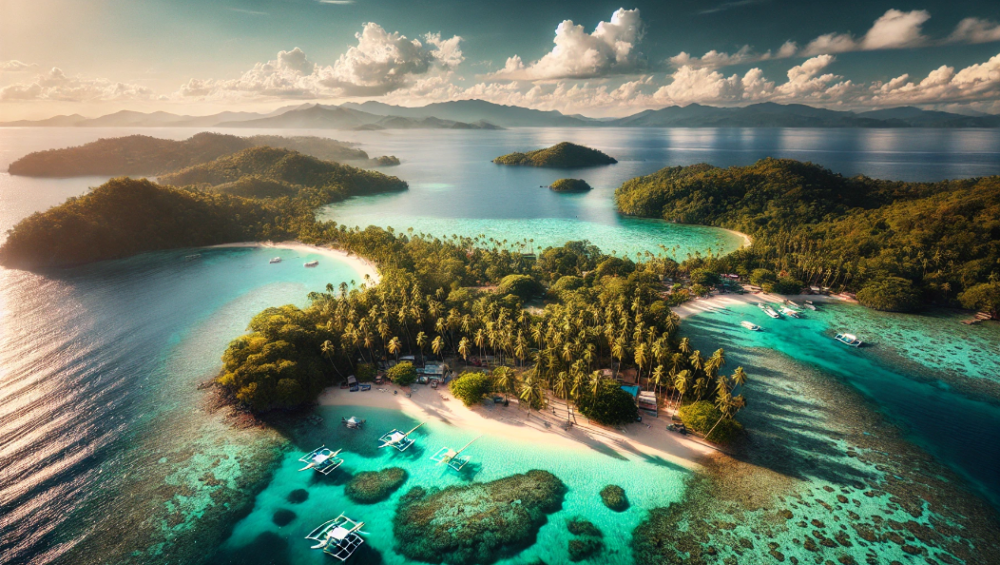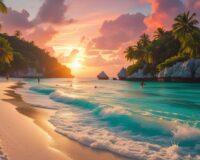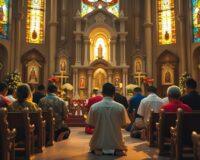Discovering Negros Island: A Jewel of Natural Beauty, Culture, and Economic Significance
Negros Island, the 4th largest island in the Philippines, stands as a remarkable destination that offers a unique combination of natural beauty, rich cultural history, and economic importance. Known for its expansive sugar plantations, towering mountain ranges, and pristine beaches, the island invites travelers from all over the world to experience its diverse landscapes and vibrant local culture. Whether you’re looking to explore its historical landmarks, embark on an adventure through its stunning natural scenery, or immerse yourself in the island’s rural life, Negros Island promises an unforgettable experience.
Stretching across both Negros Occidental in the west and Negros Oriental in the east, the island is a cultural and geographical blend. From the fertile plains that produce much of the Philippines’ sugar supply to the lush rainforests surrounding Mount Kanlaon, the island’s highest peak and active volcano, Negros boasts a dynamic landscape perfect for nature lovers. Meanwhile, its coastal areas offer some of the country’s best beaches and marine sanctuaries, drawing visitors who are in search of crystal-clear waters and vibrant underwater ecosystems.
Negros Island’s rich history is also a key draw for visitors and residents. From its early settlements and role in the Spanish colonial era to its pivotal role in the sugar industry, the island’s past is intricately woven into its modern identity. Heritage sites in cities like Silay and Bacolod showcase the island’s historical significance, with well-preserved ancestral homes offering a glimpse into the life of wealthy hacenderos during the 19th century. Festivals like MassKara in Bacolod celebrate the island’s resilience and joyful spirit, adding another layer of cultural depth.
Economically, Negros Island is a powerhouse in the country’s agricultural sector, particularly in the production of sugarcane. However, the island has diversified its economy over the years to include tourism, fisheries, and manufacturing, making it a vital part of the Philippines’ economy. Its local industries continue to thrive while offering opportunities for investment and growth.
In this comprehensive guide, we will dive into the geography, culture, economy, and tourism offerings of Negros Island. Whether you’re planning to visit or are simply interested in learning more, by the end of this article, you’ll have a deeper appreciation for the island’s beauty, historical relevance, and modern contributions to the Philippines.
Geography and Location of Negros Island
Negros Island, located in the central part of the Philippines within the Visayas region, is a geographically diverse and ecologically rich landmass. Situated between the islands of Cebu to the east and Panay to the west, it is separated by two key bodies of water: the Tañon Strait, which divides Negros from Cebu, and the Guimaras Strait, which separates it from Panay. Covering an area of approximately 13,328 square kilometers, Negros is the fourth largest island in the Philippine archipelago, following Luzon, Mindanao, and Samar.
Negros Island is divided into two provinces, each with distinct cultural, geographical, and economic characteristics:
- Negros Occidental (on the western side) is known for its sugarcane fields, vibrant cities, and economic significance in the sugar industry.
- Negros Oriental (on the eastern side) boasts stunning coastlines, natural parks, and rich biodiversity, making it a prime destination for eco-tourism.
These two provinces are connected culturally and economically but have their own unique identities shaped by the land and people.
Dominated by Mount Kanlaon: The Heart of Negros’ Geography
The island’s landscape is marked by the imposing Mount Kanlaon, an active stratovolcano that towers at an elevation of 2,465 meters above sea level. Located in the northern part of the island, Mount Kanlaon straddles both Negros Occidental and Negros Oriental, and is not only the highest point on the island but also one of the tallest and most active volcanoes in the Philippines. As the centerpiece of the Mount Kanlaon Natural Park, this volcanic giant plays a crucial role in shaping the island’s geological features and influences the surrounding ecosystems.
Mount Kanlaon is part of the Negros Volcanic Belt, a region of significant geothermal activity that impacts both the physical landscape and agricultural potential of the island. The volcano, with its lush surrounding forests, crater lakes, and dramatic slopes, attracts adventurers and nature lovers alike, offering challenging hiking trails and stunning panoramic views. Despite its beauty, it remains an active volcano, with regular monitoring by the Philippine Institute of Volcanology and Seismology (PHIVOLCS) to ensure the safety of residents and tourists.
Fertile Plains and Agricultural Heartlands
The geography of Negros is characterized by vast fertile plains that are ideal for agriculture, particularly for growing sugarcane, the island’s dominant crop. These plains, which are especially prominent in Negros Occidental, have made the island the sugar capital of the Philippines, with sprawling haciendas (plantations) that stretch as far as the eye can see. The plains are nourished by volcanic soil from Mount Kanlaon and the surrounding mountain ranges, which contribute to the richness of the land, making it ideal for farming not only sugarcane but also rice, corn, and various tropical fruits.
The agricultural landscape of Negros plays a critical role in supporting local communities and driving the economy. Small towns and rural areas throughout the island are dotted with fields and farms, where sugarcane and other crops are harvested. Many of these agricultural lands are irrigated by the island’s significant waterways, ensuring that the fields remain productive year-round.
Coastal Beauty and Marine Resources
In contrast to its fertile interior, Negros Island is surrounded by stunning coastlines that boast crystal-clear waters, white sandy beaches, and a wealth of marine life. The island’s coastlines are especially prominent in Negros Oriental, which has developed a reputation as one of the top destinations for diving and snorkeling in the Philippines. The waters around Apo Island, a small island off the coast of Negros Oriental, are renowned for their vibrant coral reefs and biodiversity, attracting divers from all over the world.
The island’s coasts also support vibrant fishing communities, with the seas around Negros being rich in marine resources such as tuna, bangus (milkfish), and prawns. Coastal towns rely heavily on fishing as a primary source of livelihood, and fish farming (aquaculture) is a growing industry. The coastal regions also offer tourists the chance to experience the underwater beauty of the island through activities such as dolphin watching in Bais City and whale watching in the Tañon Strait.
Majestic Mountain Ranges and Rich Biodiversity
Beyond Mount Kanlaon, Negros Island is home to several mountain ranges that run through the island, creating a landscape of rolling hills, dense rainforests, and cascading waterfalls. These mountain ranges provide vital habitats for the island’s rich biodiversity, which includes several species of flora and fauna that are endemic to Negros and the surrounding Visayas region.
Negros’ mountainous regions are home to protected areas such as the Northern Negros Natural Park and the Twin Lakes of Balinsasayao and Danao Natural Park in Negros Oriental. These parks contain diverse ecosystems, ranging from lowland forests to montane rainforests, supporting rare and endangered species such as the Philippine spotted deer, Visayan warty pig, and various species of birds, including the Negros bleeding-heart pigeon. The forests also serve as critical watersheds for the island, supplying water to both agricultural and urban areas.
Tourists and locals alike are drawn to these natural areas, not only for their scenic beauty but also for the chance to experience eco-tourism activities such as hiking, bird-watching, and exploring waterfalls. The mountainous terrain, while challenging to navigate in some areas, offers adventurers a chance to explore untouched parts of the island and engage with its natural beauty.
Rivers and Waterways: Lifeblood of Agriculture and Communities
Negros Island is crisscrossed by several significant rivers and waterways that are essential for agriculture, irrigation, and the daily lives of local communities. Among the most important rivers are the Bago River and the Ilog River, which flow through the agricultural heartlands of Negros Occidental. These rivers provide irrigation to the vast sugarcane fields that dominate the landscape, ensuring that the island’s agricultural productivity remains high, even during dry seasons.
The rivers also serve as vital water sources for the local population, supplying freshwater for drinking, washing, and industrial use. Many small towns and communities are built along the banks of these rivers, where traditional lifestyles revolve around fishing, farming, and maintaining a close connection with the natural environment.
In addition to their practical uses, the island’s rivers also contribute to its scenic beauty. Winding through valleys and rainforests, these waterways offer opportunities for recreational activities such as rafting and kayaking, providing visitors with a unique way to explore the island’s natural landscapes.
Strategic Location in the Visayas Region
Negros Island’s strategic location in the heart of the Visayas region makes it an essential gateway to other islands and provinces in the Philippines. Its proximity to Cebu and Panay enables ease of travel between the islands, whether by ferry or air travel. Major cities such as Bacolod and Dumaguete serve as transportation hubs, providing connectivity to other key destinations within the Philippines and beyond. This central location enhances the island’s importance as both an economic and tourism center, making Negros Island a crucial link in the archipelago.
Negros Island is a geographically rich and diverse region that offers a mix of agricultural abundance, natural beauty, and cultural depth. Its unique combination of volcanic mountains, fertile plains, stunning coastlines, and biodiverse rainforests makes it a destination that caters to a wide variety of interests—from agriculture and eco-tourism to history and culture. Whether you’re visiting for adventure, relaxation, or to explore its economic opportunities, Negros Island’s dynamic geography ensures a truly immersive experience.
Economy of Negros Island
The economy of Negros Island is heavily based on agriculture, with sugarcane being the most prominent crop. Negros Occidental, in particular, has earned the nickname “Sugar Bowl of the Philippines” due to its vast sugarcane plantations, which produce a significant portion of the country’s sugar. The sugar industry has historically been the main driver of the island’s economy, providing livelihoods for thousands of farmers, mill workers, and their families.
In recent years, however, the island has diversified its economy to include agri-business, tourism, fishing, and manufacturing. Key economic sectors include:
1. Sugar Industry
Negros is the leading producer of sugar in the Philippines, with sugar mills and refineries scattered across the island. The sugar industry has played a major role in the socio-economic development of Negros, although it has faced challenges such as market fluctuations, climate change, and land reform issues.
2. Agriculture
Apart from sugarcane, other important agricultural products grown on Negros Island include:
- Rice
- Corn
- Coconut
- Bananas
- Coffee The island’s fertile soil and favorable climate make it ideal for farming, and many communities depend on agriculture for their livelihood.
3. Fisheries
The coastal waters surrounding Negros provide abundant fishing opportunities. Fishing communities thrive in both Negros Occidental and Negros Oriental, with the seas yielding a variety of marine species, including tuna, shrimp, and bangus (milkfish). Aquaculture, such as fish farming, is also an important industry on the island.
4. Tourism
The natural beauty of Negros Island, from its mountains and volcanoes to its beaches and marine sanctuaries, has made it a popular destination for both domestic and international tourists. Eco-tourism, in particular, is a growing sector, with activities such as:
- Hiking and trekking in the mountains and rainforests
- Diving and snorkeling in the pristine waters of Apo Island and Dauin
- Whale and dolphin watching in Bais City
- Visiting heritage sites such as the San Sebastian Cathedral in Bacolod and the Balay Negrense Museum in Silay City
Negros Oriental, with its capital Dumaguete City, is also known as a university town and a gateway to some of the best diving spots in the country.
Tourism and Travel: What to Do on Negros Island
Negros Island offers a wide variety of activities for visitors, from adventurous hikes up active volcanoes to relaxing days on the beach. Here’s a closer look at the best things to do on the island:
1. Climb Mount Kanlaon
As the highest peak on the island and an active volcano, Mount Kanlaon is a must-visit for adventurous travelers. The climb up Kanlaon is challenging, but the breathtaking views and the chance to explore its volcanic crater make it worthwhile. The surrounding Mount Kanlaon Natural Park is home to diverse wildlife and lush rainforests.
2. Explore the Beaches of Sipalay
Located in Negros Occidental, Sipalay City is famous for its unspoiled beaches and clear turquoise waters. It’s a great place for snorkeling, scuba diving, or simply lounging by the beach. Punta Ballo Beach and Sugar Beach are two of the top spots to visit in Sipalay.
3. Visit Apo Island
Apo Island, located off the coast of Negros Oriental, is one of the best diving and snorkeling destinations in the Philippines. It is famous for its vibrant coral reefs and the chance to swim with sea turtles. Apo Island is also home to a protected marine sanctuary, making it a haven for marine life enthusiasts.
4. Whale and Dolphin Watching in Bais City
In Bais City, located in Negros Oriental, visitors can embark on boat tours to see whales and dolphins in their natural habitat. The Tanon Strait, which separates Negros from Cebu, is a rich marine biodiversity area, and sightings of these majestic creatures are frequent.
5. Heritage Tour in Silay City
Known as the “Paris of Negros,” Silay City is famous for its well-preserved ancestral houses from the Spanish colonial era. The Balay Negrense Museum and the Hofileña Ancestral House offer a glimpse into the lifestyle of the island’s wealthy sugar barons during the 19th and early 20th centuries.
6. Relax in Dumaguete City
The capital of Negros Oriental, Dumaguete City is known for its relaxed vibe and as a center for education and culture. Take a stroll along the scenic Rizal Boulevard, visit the Silliman University campus, or enjoy a coffee in one of the city’s many charming cafes.
Ecological Diversity and Conservation
Negros Island is home to incredible biodiversity, thanks to its varying landscapes, from mountains and volcanoes to forests and coastal areas. The island is part of the Negros-Panay Biodiversity Corridor, which is a priority conservation area in the Philippines. Efforts are being made to preserve the island’s natural habitats, including:
- Protecting the Philippine spotted deer and the Visayan warty pig, both of which are endemic to the island.
- Reforestation projects aimed at restoring the island’s forests, which have been affected by deforestation and logging.
Negros Island is also rich in marine life, with coral reefs, mangroves, and seagrass beds providing critical habitats for fish and other marine species. Conservation efforts, particularly in areas like Apo Island and Dauin, help protect these ecosystems while promoting sustainable tourism.
Negros Island, the 4th largest island in the Philippines, offers a unique blend of natural beauty, cultural heritage, and economic significance. From its lush landscapes and sugarcane fields to its pristine beaches and vibrant marine life, the island has something for everyone. Whether you’re planning an adventure to Mount Kanlaon, exploring the rich history of Silay City, or diving into the clear waters of Apo Island, Negros is a destination that promises an unforgettable experience. With its diverse economy, thriving tourism sector, and efforts to conserve its natural environment, Negros Island continues to be a jewel in the heart of the Philippines.



